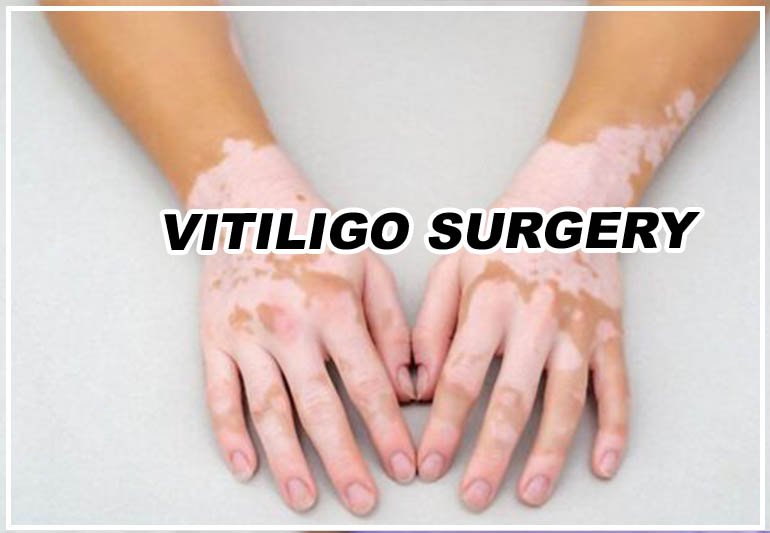Meet Our Doctor


Dr. Neha Rajesh Rathi
Consultant Dermatologist & Cosmetologist
Vitiligo Surgery

What is Vitiligo

What are the Symptoms of Vitiligo?

Depigmented patches: The primary symptom of vitiligo is the appearance of depigmented or white patches on the skin. These patches are usually well-defined and may occur on any part of the body, including the face, hands, arms, legs, and genital area. The patches may start small and then enlarge over time.
Loss of color in hair and mucous membranes: In addition to the skin, vitiligo can also cause a loss of pigment in the hair, resulting in premature graying or whitening. It can also affect the color of the mucous membranes, such as the inside of the mouth and nose.
Sensitivity to sunlight: The depigmented areas of skin in vitiligo are more susceptible to sunburn and sun damage. Therefore, individuals with vitiligo may experience increased sensitivity to sunlight and may need to take precautions to protect their skin.
Psychological impact: Vitiligo can have a significant psychological impact due to its visible nature, especially in people with darker skin tones. It may cause feelings of self-consciousness, low self-esteem, and social anxiety.
Treatment for Vitiligo

The treatment of vitiligo, a skin condition characterized by the loss of pigmentation in certain areas of the skin, can vary depending on the individual and the extent of the condition. While there is no known cure for vitiligo, there are several treatment options available to help manage the symptoms and improve the appearance of the affected areas. Here are some common treatment approaches:
Topical Corticosteroids: These medications are applied to the affected skin to help reduce inflammation and repigment the skin. They are most effective when used on recent or actively spreading patches of vitiligo.
Topical Calcineurin Inhibitors: Similar to corticosteroids, these creams help suppress the immune response in the skin and can be used on sensitive areas such as the face and genitals.
Topical Psoralen Plus Ultraviolet A (PUVA) Therapy: Psoralen is a medication that makes the skin more sensitive to ultraviolet light. It is applied topically or taken orally, followed by exposure to UVA light. This combination stimulates repigmentation of the skin.
Narrowband Ultraviolet B (NB-UVB) Therapy: This treatment involves exposure to artificial UVB light to stimulate repigmentation. It is usually done in a dermatologist’s office or clinic and requires multiple sessions over several months.
Excimer Laser: This targeted laser therapy delivers a concentrated beam of UVB light to the affected areas, helping to stimulate repigmentation. It is often used for localized vitiligo patches.
Depigmentation: In cases where vitiligo affects a large portion of the skin, some individuals may opt for depigmentation treatment. This involves lightening the remaining pigmented skin to achieve a more uniform appearance.
Precaution

Sun protection: Protecting the skin from excessive sun exposure is crucial for people with vitiligo. The depigmented patches are more susceptible to sunburn and can worsen in appearance. Apply a broad-spectrum sunscreen with a high SPF, wear protective clothing, and seek shade during peak sun hours.
Balanced diet: Although diet alone cannot prevent or cure vitiligo, consuming a balanced diet rich in vitamins, minerals, and antioxidants may support overall skin health. Include a variety of fruits, vegetables, whole grains, lean proteins, and healthy fats in your meals.
Phototherapy: Phototherapy involves exposing the skin to specific wavelengths of light to stimulate repigmentation. This treatment is often conducted under medical supervision and may require multiple sessions.
Conclusion

